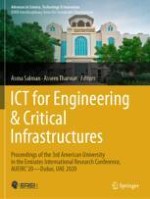This book—consisting of four parts—brings forth a comprehensive evaluation of information and communication technologies (ICTs) utilization in engineering and infrastructures. The field of engineering has consistently been a bastion of problem-solving and innovation. It has continuously aided humanity in conquering seemingly unsolvable obstacles by pushing the limits of human capability and ingenuity. In the modern age, modern computational methods and digital systems present themselves as the frontier of novel technological innovation, thus attaining the potential to considerably strengthen various engineering fields. Tackling essential topics such as the incorporation of informatics in infrastructure, cybersecurity, advanced networking techniques, and smart resource management, this book peers into the future of engineering, proving as an excellent resource for engineers, entrepreneurs, policymakers, network specialists, and finally, computer scientists.
